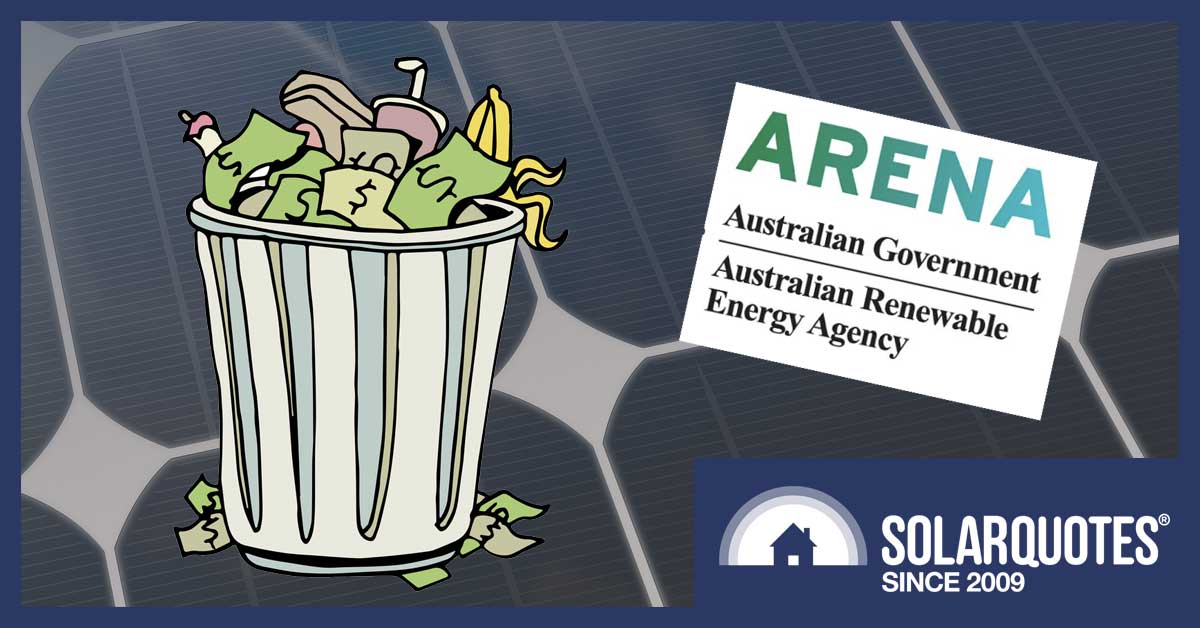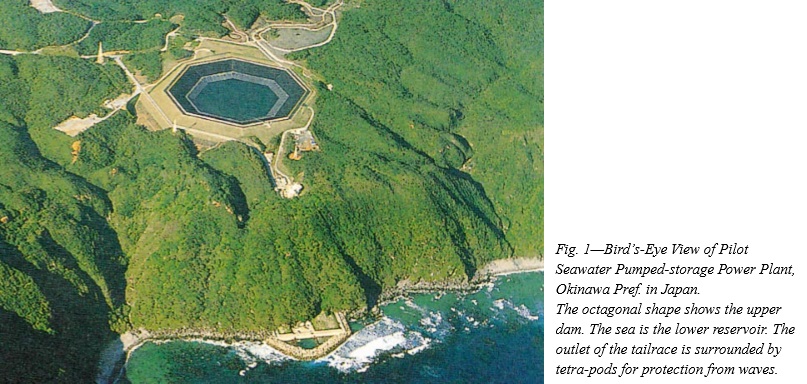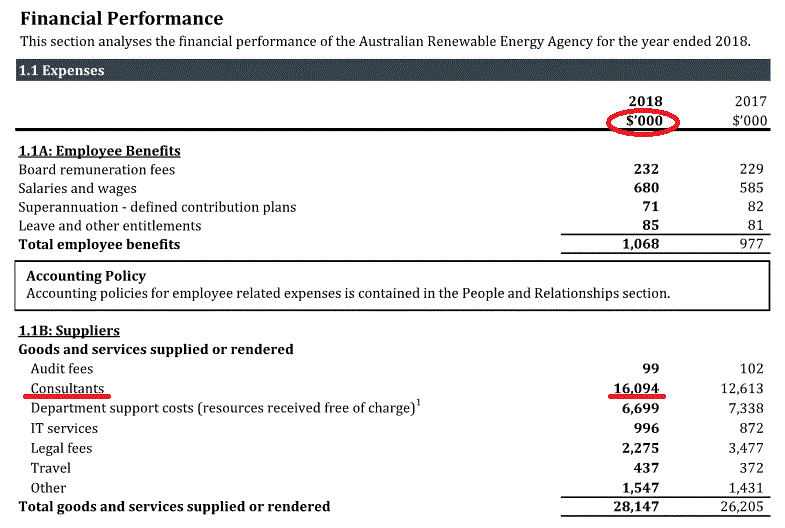
If you are in a hurry, the summary of this post is: ‘In my humble opinion: Yes’.
I recently wrote about Labor’s Hydrogen Plan announcement where they referred to a report by ACIL Allen Consultants saying Australia’s hydrogen exports could be over $3 billion a year by 2030. In my previous article I explained why this is extremely unlikely.
This article is going to be 2,000 words dedicated to me complaining. Specifically about why I consider the consultant report titled “Opportunites For Australia From Hydrogen Exports” worse than useless and why I think ARENA — Australia’s Renewable Energy Agency — wasted your money paying for it.
I am the exact opposite of impressed with the report and ARENA for the following 5 reasons:
- The ACIL Allen report isn’t a feasibility study that could help ARENA decide what projects to invest in. Instead it’s an unrealistically optimistic report on opportunities. This is useless for helping ARENA because they need cold, hard facts to do their job of deciding what hydrogen projects deserve finance and are likely to pay off. Over-optimistic speculation is not helpful.
- It’s not ARENA’s job to drum up support for hydrogen or any particular type of energy storage. Private companies can pay for non-rigorous reports if they want, but public funds should not be used.
- Because it was an optimistic report on opportunities rather than a realistic look at feasibility it ignores obstacles to large scale hydrogen exports that are very obvious. In my opinion this makes the report misleading and therefore worse than useless.
- The report gives three scenarios and uses carbon prices, taken from from another report, but the prices are unrealistically high.
- ARENA spent $16,094,000 on consultants in 2018. This was a 25% increase from 2017. If this hydrogen opportunities report is indicative of what ARENA is paying for then I think they are wasting money that instead could be spent cleaning up Australia’s energy sector.
The ACIL Allen report’s conclusions disagree with my own but that’s fine. I’m not worried about it. I’ve already written an article about that. This article is about how I disagree with the methods used to produce and pay for the report.
Before I go further I will state everything in this article, good or bad, right or wrong, is 100% my responsibility.
A Report On Opportunities Is A Wasted Report
According to its introduction, ARENA asked ACIL Allen Consulting for a report that identifies opportunities for Australia to export hydrogen.
This is a reasonable approach to commissioning a report… if you’re looking to throw money away.1
If you want a rigorous report you have to set the parameters carefully. If you said you were willing to pay me to write a report on echidna milk export opportunities I could do that for you and everything I’d write would be potentially true. I could produce a nice glossy report pointing out Australia has a virtual monopoly on the supply of echidnas, I’d mention Australian milkmaids are skilled at avoiding pricks, and I’d say that if just 1% of world milk consumption switches from cows to echidnas Australia could export over 2 billion litres a year.

“You do know echidnas don’t have nipples, right?” (Image: Curtin University)
But I would have to mention that is a completely unrealistic dream scenario that would never actually happen. I would do this because I would never let a report go out with my name on it that omitted information that was both important and obvious. It’s possible I could make a mistake and leave out information that was important but not obvious, but to leave out stuff I know is important stinks. This is true even if my client would rather remain unaware.
No Mention Of Major Obstacles To Hydrogen Exports
I’m not saying there are no opportunities for Australia to export hydrogen. Maybe in the future it will be used for aviation, shipping, industry, and competitive blimping.
But ACIL Allen assumes the main uses for hydrogen exports will be:
- Road transport
- Replacing natural gas, and…
- Energy storage
Or as they put it…
All these have major obstacles in the way of their implementation that the report puts zero effort into explaining. I can think of 6 major problems off the top of my head and there may be others I’ve overlooked. The 6 obvious obstacles are:
- Electric vehicles are currently clearly superior to hydrogen vehicles and outselling them around 400 to 1.
- Electricity can replace residential and commercial natural gas consumption at a lower cost than than hydrogen.
- Other forms of energy storage such as pumped storage and batteries are currently cheaper than the projected future cost of exported hydrogen.
- It could be cheaper to use undersea transmission cables to export energy. The proposed link between Western Australia and Indonesia is one example.
- Rather than use hydrogen produced with renewable electricity it may be cheaper to use natural gas and then remove the CO2 released from the atmosphere and sequester it.
- Thanks to horribly low efficiencies, hydrogen can be worse for the environment than other forms of energy storage such as pumped hydro or batteries. Large efficiency losses are unavoidable with the production and distribution of hydrogen and cannot be overcome with better technology; unless it allows us to break the laws of physics like in a Doctor Who episode.

The scripts, direction, and budget all suck, so of course some are people are blaming everything on the lead’s gender. (Image: BBC)
If you know enough about hydrogen to contribute to a 56 page report on it, then at the very least you should be aware of the majority of these obstacles. Most are are obvious so I find it hard to believe they were left out through ignorance. But for the majority of readers they will not be sticking out like a sore bum and so need to be mentioned. If you keep obvious obstacles to yourself then your report will be a lot more upbeat, cheerful, and optimistic, but it’s not going to be accurate because you’ve only provided half — or less — of the story and people will come away with the wrong impression. By deciding not to properly inform your readers you are wasting their time: the opposite of educating them.
The Report Uses Unrealistically High Carbon Prices
The ACIL Allen report gives three different scenarios for potential hydrogen exports — low, medium, and high — and assumes carbon prices will be in place for each. The prices were taken from an IEA (International Energy Agency) report called Sustainable Development Scenario or SDS:
If these figures were realistic this would be fine, but carbon prices are never likely to go this high because their upper limit is the cost of removing CO2 from the atmosphere and sequestering it. This is likely to be much less than the price range they use for 2040 of $174 to $192 Australian at the current exchange rate. While estimates vary, I am confident I could make a profit sequestering the carbon in agricultural waste with a carbon price of under $100 a tonne.2
ACIL Allen Doesn’t Think Much Of Their Own Report
Personally, I think the report is worse than useless. Interestingly, ACIL Allen don’t seem very impressed with it themselves as they put this sentence near the beginning:
As you can see from what I underlined in red, the writers of the ACIL Allen report accept no responsibility for its accuracy. That’s a bit bloody cheeky of them. I can understand not having enough time or resources to write a good report, but to accept no liability at all for your work is not something we would accept in any other situation. If you ordered a meal in a restaurant and the chef came out and said, “I made a reasonable effort not to use rotten food but if you get sick that’s not my fault. That’s on you for eating it,” you wouldn’t be impressed.
When I write something and I screw up and get it wrong — which has happened at least once or twice — then it’s on me. It’s my fault. I’m the one responsible. And I can’t make that responsibility disappear by pretending it doesn’t exist.3
It Seems To Me ARENA Is Wasting Money On Reports That Are Worse Than Useless
If you don’t know anything about the likelihood of Australia exporting hydrogen to other countries you would probably at least know that you don’t know anything. But if you read the ACIL Allen report on hydrogen export opportunities, because of what it leaves out, there’s an excellent chance you would end up thinking the opportunities are far more optimistic than they are. In other words, this report has the potential to make you dumber.
This could result in you unwittingly spreading the dumbness around because you, quite reasonably, thought the professional looking report gave an accurate appraisal of the situation. This means ARENA has spent money on a report that has the potential to make them dumber along with Australia in general. So they haven’t just wasted money, they have used it to make things worse.
ARENA spent over $16 million on payments to consultants last year. Adjusting for inflation this is a 25% increase over 2017:
If the ACIL Allen report on hydrogen export opportunities is indicative of the type of Report ARENA are paying for then I fear your money is being wasted. Every dollar spent on a worthless report is a dollar that’s unavailable to finance the renewable technology required to reduce pollution and protect the environment. If they had been more discriminating with their spending on consultants and kept it at the level it was in 2017 they’d have over $3.2 million to spare. This could have been spent financing things such as Concentrating Solar Power…

(Image: Solar Reserve)
Sea water pumped hydro storage…

(Image: Hitachi Review Vol. 47)
Or 400,000 litres of beer…
While I don’t approve of ARENA funds being used to finance a ridiculous quantity of alcohol, if they have to blow money on things that make you stupider, it may as well be something most Australians will enjoy.
Footnotes
- Admittedly, I don’t know exactly what ARENA requested when they commissioned the report. All I found online was a rather vague expression of interest from 2017. I don’t even know what ARENA paid for it. Maybe ACIL Allen gave it to them for free out of the goodness of their hearts. But that’s not how the consultancy biz usually works. ↩
- A point people sometimes get caught up on is that a carbon price of $100 Australian per tonne is not enough to remove and sequester our current carbon emissions as they are so high the lower cost methods would be swamped. But at that price coal use would soon be eliminated along with most natural gas consumption and — all else equal — the electrification of transport would receive a boost. This means carbon emissions would soon be greatly reduced. Provided most road transport is electrified it should be possible to remove remaining emissions for under $100 a tonne. ↩
- My school teachers were very big on responsibility which caused me no end of trouble. For example, they’d tell us keeping the classroom clean was everyone’s responsibility. Then a couple of days later they’d say, “Who’s responsible for this mess?” And I’d say, “I am!” because everyone is, but then I’d end up being the only one punished. ↩








 RSS - Posts
RSS - Posts



RB: ” If this hydrogen opportunities report is indicative of what ARENA is paying for then I think they are wasting money that instead could be spent cleaning up Australia’s energy sector.”
How true. What an utter waste of resources!~
Great article.
Sounds like ARENA is run by ex consultants giving out jobs for the boys but then again I am not liable for the accuracy of my comment.
Hi Ron
I’m not sure I follow your argument about the $100/tonne being adequate to sequester CO2 for small volumes, but would be swamped at the present emissions rates.
I’d have thought all technologies should benefit from economies of scale?
(if you’re planting forests, more forests mean more funds available to invest in more efficient planting methods)
Well, there are people who are willing to pay to have trees planted to reduce erosion and that reduces the cost of removing CO2 from the atmosphere, but we’d have to grow a forest about the size of South Australia to remove one year’s fossil fuel emissions from the atmosphere so we’re going to run out of low cost tree planting opportunities pretty quick. Much the same for locking up carbon through appropriate ocean dumping agricultural waste. There is only a limited amount agricultural waste that can be obtained and is located near rail lines or navigable rivers. And while farmers will pay to have their soil amended with charcoal (biochar), once their soil is amended as much as possible they aren’t going to pay for any more.
So if we cut CO2 emissions by 90-95% it may not be too expensive to capture and sequester the remaining emissions, but to sequester anything close to their current level isn’t likely to be cheap. Maybe a method will be developed that is both cheap and scalable, but I wouldn’t count on that happening in time to save the icecaps. (Or should that be icecap now?)
Thanks Ron – that’s been most informative. BTW – excellent comments.
I guess when you can lower the cost for someone else (e.g. plant erosion-combating trees), the costs are effectively being subsidised – and I see your point about biochar soil amendment having a non-sustainable result.
A question – the need to plant a forest the size of SA – is this just to sequester the whole of Australia’s fossile fuel emissions? What about wetland methane emissions? Methane from cattle (digestion).
These all seems to differ from the ~ 3 billion tones of CO2 exhaled annually by the world’s population of humans (although, I understand our consumption of agricultural products makes this carbon-neutral?). Downside, is that all of these humans want power and energy as well, in great doses, to have the best quality-of-life.
So – given the extent of emissions of CO2 by other than the burning of fossil fuels (I am led to understand this is less than 50% of the overall CO2 problem), I’d think it pretty ambitious to reduce the total by 90-95%.
Maybe we could have maximum immediate impact, by first “draining all the swamps”!
Very roughly we would need to grow a forest the size of South Australia every year to remove the world’s current annual fossil fuel CO2 emissions. That’s clearly impossible. Alternatively if we had two South Australias worth of highly productive farmland and used for fast growing plants and continuously harvested them and sequestered the carbon in them it could absorb all fossil fuel related CO2 emissions, but currently our highly productive farmland is being used for food.
You are right that the CO2 humans breath out is carbon neutral because all the carbon we eat was originally removed from the atmosphere by a plant — unless you are Tony Abbott who dines on a briquette of coal every evening.
Some CO2 emissions come from land clearing, but the large majority is from fossil fuel use. So cutting emissions by 90-95% is doable if we kick the fossil fuel habit.
But don’t drain the swamps! They’re great carbon traps. They’re where our coal deposits came from.
Hi Ronald
Thanks for the heads up about swamps – I can appreciate now, that they are something like a fully mature forest – basically like a semi-static store for captured carbon. I thought you originally said they are carbon sinks – but I note now the word is trap – I would have used the word store, as they are only trapping carbon during original growth – then storing it.
However – my real concern about swamps/wetlands, is that they emit quite a lot of methane, CH4, arising from micro-organisms dwelling in lake sediment and freshwater wetlands – that are the primary sources. I understand CH4 is 30 times as potent as a global warming gas than CO2, and the relative increases will outpace CO2 from these sources as temperature increases.
I was interested to read that water vapour (not including clouds) is the major global warming greenhouse gas, at 36-70%, with CO2 a distant second at 9-26%, followed by CH4 at 4-9%, and ozone 3-7%. But water vapour is not apparently directly influenced by human activities – however is amplified by other warming (positive feedback) – I guess this is one of the sources of concern about a “tipping point” (runaway feedback)?
I guess you may have read some of my posts about transition planning – where I was concerned our transition may be delayed significantly, unless we are prepared to utilise other forms of possibly non-renewable – but lower or non-emitting technology – to get us away from coal – maybe natural gas, or nuclear, or hydro if we can do it in a reasonable timeframe. Practically – in the short-medium-term anyway – I suspect tidal, compressed air, and many other concepts yet to be even research prototyped, are going to turn out merely “thought bubbles”. Or – we keep burning coal – and allow PV and wind time to be implemented at sufficient magnitude – with batteries possible pumped hydro (at great cost).
Swamps do contribute a lot of methane to the atmosphere and in Australia termites emit a lot. But my first impulse would be to reduce methane emissions from mining industry, and agriculture before going after swamps. Fortunately, a lot of fugitive methane emissions come from coal mining and they will decline as coal production does.
Right now, a combination of solar, wind, and gas peak generators is a low cost way to eliminate coal generation. It’s also very quick to set up. If I wanted to I could lease some second hand gas turbines overseas and have them shipped over and set up within weeks. Solar and wind are quick to deploy with solar being the fastest as it doesn’t require large heavy foundations. While emissions from natural gas are a concern, because gas will only be used as needed they will be a small fraction of what results from coal generation. Fortunately there are plenty of other options that don’t require natural gas. But nuclear won’t be used because of its expense. Countries with existing nuclear power are paying through the nose for new reactors so Australia, without an existing nuclear power industry, would have to pay even more. Nuclear also has the problem that coal has in that the majority of its cost is capital cost so it doesn’t save much money by reducing output during periods of low electricity prices.
But I do think you’ve hit the nail on the head about wasting money on less than useless reports!
Shame ARENA, ACIL Allen, shame…
Aren’t you being a little hard on them Ron? After all it could have been worse.. a monorail perhaps?
https://youtu.be/ZDOI0cq6GZM
Hi Ronald,
You state:
“Because it was an optimistic report on opportunities rather than a realistic look at feasibility it ignores obstacles to large scale hydrogen exports that are very obvious. In my opinion this makes the report misleading and therefore worse than useless.”
In my comment (https://www.solarquotes.com.au/blog/labor-hydrogen-plan-analysis/#comment-358380) I refer to the Transport & Environment graphical comparison of the energy efficiencies of battery-electric, hydrogen fuel cell and CO2/F-T to ICE fuel technologies.
With 100% renewable electricity supply, the ‘fuel’ produced (i.e. electricity) including transmission losses for a battery electric vehicle has an efficiency of 95%. Adding AC to DC conversion, battery charge efficiency, DC to AC conversion and motor efficiency provides an overall efficiency of 73%.
For hydrogen-fuel-cell vehicles, with 100% renewable electricity supply, hydrolysis incurs a 30% energy loss, and transport, storage and distribution incur another 26% energy loss, so fuel production efficiency is down to 52%. H2 to electricity conversion, DC to AC conversion and motor efficiency provides an overall efficiency of 22%.
That indicates hydrogen-fuel-cell vehicles are likely to consume more than 3.3 times electrical energy as an equivalent mass battery-electric vehicle to go the equivalent distance.
CO2/F-T to fuel for ICE vehicles technology is worse still, requiring more than 5.6 times electrical energy as an equivalent mass battery-electric vehicle to go the equivalent distance.
These figures are likely ‘ballpark’, but it indicates the relative magnitudes of the energy losses. Of course, hydrogen can be used for purposes other than transport.
It astounds me that so many people that should know better appear to be energy illiterate, and consequently so much time and resources are squandered (that we can ill afford) on apparently futile and wasteful endeavours, like apparently the ACIL Allen report you refer to.
I think a more useful ARENA consultant’s report is one titled “Comparison of Dispatchable Renewable Electricity Options: Technologies for an orderly transition”, published in October 2018.
See: https://arena.gov.au/projects/dispatchable-renewable-electricity-options/
It appears the current federal COALition government is hell-bent on promoting more coal-fired power generation. It seems they wish to wreak this country – more expensive, more unreliable energy.
See: https://reneweconomy.com.au/coalition-energy-plan-unworkable-as-taylor-charges-into-coal-90074/
I disagree…
Ultimately batteries and hydro filled by solar and wind are great no doubt, however there are some holes in heavy industry, export opportunities and other industrial processes that they can not alone fill.
You are letting perfect get in the way of good when it comes to energy losses. We need to oversize the renewable sector for poor weather and then have multiple options for producing transportable carbon free fuels from it.
Ammonia which acts as store for hydrogen is transportable, can be used in ICE with retrofits (existing stock), also replaces carbon made ammonia for agriculture, can replace coking coal in steel making, would create a new industry with exports and jobs and is better for the environment than the embedded energy found in hydro and batteries. Lithium and cobalt are not exactly abundant or without their own issues. Hydro too has a massive steel and concrete co2 bill to pay. I think we need them, but none are perfect. Having a world wide one child policy would probably be the closest to perfect we would get unfortunately.
When you consider the wider world and see many countries north to us, such as Japan and south Korea that don’t have the wind and solar options we have here, you see there needs to be a power source to fuel their economies. We can’t run cables all over the world, nor ship batteries. Oil is the number one commodity traded and we need an option to replace it. Oil has caused many wars over the years and may still cause more with Russia and US now both oil exporters for the first time last year. For world stability we need a transportable, high density and GHG free fuel that simply outcompetes oil in industrial and transport uses. There are now h2 trains in Europe and massive investment in Korea, Japan and San Fran.
Renewable Hydrogen is a simple and GHG free circular chemical reaction which could also displace the leaking methane in LNG production and burning solving another major issue with green housing our planet.
If we wait for h2 / ammonia to be perfect it will never happen. We need ARENA to invest heavily… much more heavily in this area to get us out of the shitty place the world finds itself with co2 levels. Science is the bastion of hope we have and we should look to multiple solutions.
Excellent report on echidna milk. Sounds quite feasible! That is a lot of potential revenue. I’ll start rounding them up…
Ron, Can you comment on Jeremy’s valid sounding criticism of your article?
Well, I’ll just quickly mention that that Tesla is now producing lithium battery cells for around $150 per kilowatt-hour and other companies are providing reliable cells for around $200 per kilowatt-hour. It just doesn’t look like hydrogen storage can compete with that for ground transport, particularly given there are unavoidable greater energy losses involved that can’t be eliminated through better technology.
I won’t say more than that because I am very busy at the moment trying to look busy, but if you have any specific questions you want to ask, please go right ahead and I will try to answer them.
I’d personally pay more attention to someone with a suitably technical background like Ronald than a photographer like Jeremy.
An article that dissects a recent research paper on H2 cost competitiveness :
https://www.carbonbrief.org/renewable-hydrogen-already-cost-competative-say-researchers
KEY POINTS :
• Hydrogen is seen as a potentially important low-carbon replacement for natural gas (predominantly methane) in the energy system, alongside the roll-out of renewable electricity. It could be used to reduce emissions from industrial processes that need gas to create high temperatures, such as steel production.
• Hydrogen may be required to decarbonise some sectors including heavy-duty transport and industry where electricity is less suitable
• Efficiency losses do mean that renewable electricity should be used as electricity where possible,” Scamman says. “However it’s cheaper to store bulk hydrogen than electricity – particularly for seasonal storage – and hydrogen may be required to decarbonise some sectors including heavy-duty transport and industry where electricity is less suitable. History has shown that renewable deployment can occur faster than some expect. Likewise for the development of international markets.”
• Hydrogen is “the single most important remaining question in the energy transition”, energy commentator Chris Goodall tells Carbon Brief in response to the paper. He adds: “Cost competitive hydrogen from renewables makes full decarbonisation possible through power-to-gas and power-to-liquids.”
further recent article ; https://reneweconomy.com.au/will-australia-seize-opportunity-to-lead-regions-renewable-hydrogen-market-96967/